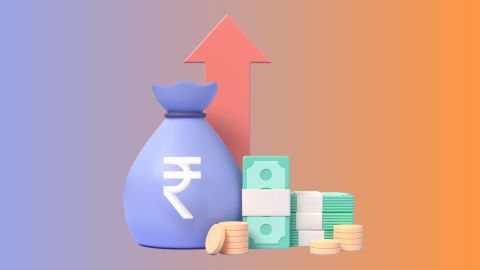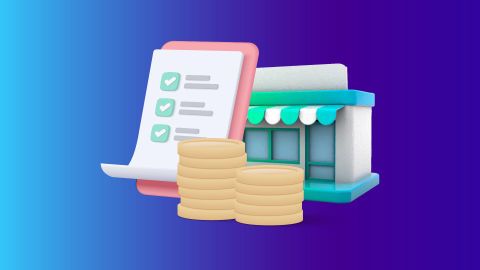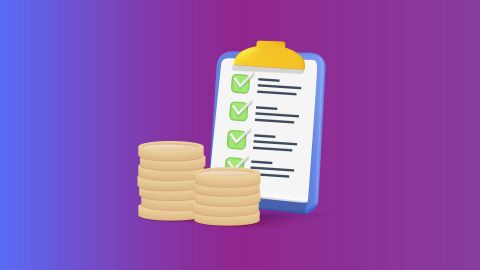The economy goes through various cycles of expansion and contraction, which is known as a business cycle. This cycle impacts the way businesses operate and can have a significant impact on their success. In this article, we will explain what the business cycle is, its phases, and how entrepreneurs can adapt to the business cycle. Also read to know how a Bajaj Finserv Business Loan can help your enterprise tide over tough times.
What is a business cycle?
The business cycle refers to the natural fluctuation of economic activity experienced by economies over time. The cycle is characterised by phases of expansion, peak, contraction, and trough, with each phase representing a stage of the cycle. To understand these fluctuations better, explore the business environment and its critical role in shaping economic activities.
During the expansion phase, economic activity is increasing, leading to growth. The peak represents the highest point of growth, after which the contraction phase starts, characterised by a slowdown in growth and output. Finally, the trough marks the lowest point of contraction before the cycle starts again, with the economy moving back into an expansion phase.
How does the business cycle work?
The business cycle is a natural phenomenon that occurs in all economies and is an essential aspect of macroeconomic analysis. The business cycle is affected by multiple factors, including changes in consumer demand, technological innovation, fiscal and monetary policies, geopolitics, and natural disasters. Entrepreneurship drives innovation and adaptation during different phases of the business cycle.
During the expansion phase, consumer and business confidence is high, credit is cheap, and output, employment, and income are increasing. These factors stimulate demand, leading to an increase in production and GDP. However, this phase cannot continue indefinitely and eventually leads to a decline in growth, resulting in a contraction phase.
Example of a business cycle
An example of a business cycle in India would be the period from 2003 to 2008, known as the Indian boom. During this time, the economy experienced high levels of growth due to a combination of factors such as a liberalised economy and foreign investments. However, this period was followed by a contraction phase during the global financial crisis of 2008-2009, leading to a slowdown in the economy. The Indian economy has since seen phases of both expansion and contraction, with the government implementing policies to manage the business cycle. Businesses during such times need proper legal frameworks like the articles of association to ensure structured growth and compliance.
Importance of business cycles
The business cycle plays an important role in shaping the economic landscape and is a crucial element of economic analysis. Understanding the business cycle can help policymakers, businesses, and individuals prepare for and respond effectively to economic fluctuations. It can also help inform investment decisions, risk management strategies, and financial planning activities. Managing and mitigating the impact of business cycles is essential for sustaining long-term economic growth, stability, and welfare for individuals and society as a whole.
What causes business cycles?
Business cycles are the fluctuations in economic activity that occur over time, typically characterized by periods of expansion (growth) and contraction (recession). Several factors cause these cycles, including:
- Demand fluctuations: Changes in consumer and business demand for goods and services can lead to expansions or contractions. High demand leads to growth, while reduced demand triggers a slowdown.
- Supply shocks: Sudden changes in the availability of resources (like oil, labour, or raw materials) can disrupt production, leading to either inflationary growth or economic slowdown.
- Monetary policy: Central banks influence business cycles through interest rates and money supply. Lower interest rates can boost growth, while tightening monetary policy can lead to a contraction.
- Government fiscal policy: Government spending and taxation policies impact business cycles. Increased public spending can drive growth, while higher taxes or reduced spending may cause economic contraction.
- Technological innovations: Major technological advancements can lead to new industries and increased productivity, sparking periods of economic expansion.
- Investor confidence: Business cycles are influenced by the confidence of investors and businesses. High confidence boosts investments and growth, while low confidence can lead to reduced spending and a downturn.
- Global events: Wars, pandemics, and global trade dynamics can significantly impact business cycles, leading to either growth or contraction depending on their nature.
- Business investment cycles: Fluctuations in corporate investments, like in infrastructure or machinery, influence economic activity, leading to periods of growth or recession.
- Credit cycles: Changes in credit availability and lending practices by financial institutions can drive business cycles. Easy credit boosts spending and growth, while credit tightening can lead to a slowdown.
- Consumer sentiment: Consumer confidence directly affects spending and saving behavior. High confidence drives consumption and economic growth, while pessimism can result in reduced spending and economic contraction.
Phases of the business cycle
The business cycle has four phases, as mentioned below:
1. Expansion
The first stage of the business cycle is expansion. During this phase, key economic indicators such as employment, income, output, wages, profits, and the demand and supply of goods and services show an increase. Debtors usually pay off their debts on time, the money supply flows quickly, and investment levels are high. This phase continues as long as the economic conditions support growth.
2. Peak
The economy reaches its highest point, known as the peak, which is the second stage of the business cycle. At this point, economic growth stops, and the indicators level off at their highest. Prices also reach their peak. This marks the point where economic growth starts to reverse, and consumers tend to adjust their budgets.
3. Recession
Following the peak is the recession stage. Demand for goods and services begins to decline steadily. Producers often continue to produce at the same rate, not noticing the reduced demand, which leads to excess supply in the market. Prices begin to fall, and other economic indicators such as income, output, and wages also start to decline.
4. Depression
During the depression stage, unemployment rises significantly. The economy continues to shrink, and as growth falls below a steady rate, it is considered a depression.
5. Trough
In the depression phase, the economy’s growth rate becomes negative. This decline continues until the prices of goods and services, as well as supply and demand, reach their lowest point. The economy hits the trough, marking the point of extreme decline, and national income and expenditure experience a substantial drop.
6. Recovery
After reaching the trough, the economy enters the recovery stage. At this point, the economy begins to bounce back from negative growth. Demand increases as prices remain low, leading to a rise in supply. The public’s attitude towards investment and employment becomes more positive, and production starts to grow again.
How is the business cycle measured?
The business cycle is measured using several key indicators that track the overall economic activity in a country. The main aspects of measurement include:
The business cycle is measured using several key indicators that track the overall economic activity in a country. The main aspects of measurement include:
Measuring economic expansion with the 3 P’s
Conversely, when analysing economic expansions, financial experts focus on the 3 P’s:
- Pronounced: This looks at how significant and noticeable the effects of the expansion are on various sectors, individuals, and corporations.
- Pervasive: This evaluates whether the benefits of economic growth have reached a broad spectrum of communities and industries within the country.
- Persistent: The persistence of an expansion is determined by its duration, specifically the time it takes from the trough of the last recession to the next peak.
Tips for handling the business cycle
Here are some tips for handling the business cycle:
1. Implement risk management strategies for different phases of the business cycle.
2. Keep an eye on consumer demand and adjust production accordingly.
3. Have a diversified portfolio of products or services to reduce dependence on a single market or sector.
4. Maintain adequate cash reserves to manage through economic slowdowns.
5. Monitor and adapt to changes in monetary and fiscal policies.
6. Prepare contingency plans for economic downturns and plan for recovery.
7. Invest in technological innovation to improve efficiency and reduce costs.
8. Keep abreast of geopolitical events that may affect the economy and adapt your strategy accordingly.
Conclusion
The business cycle is a natural cycle of expansion and contraction in the economy that impacts businesses. Entrepreneurs need to understand the business cycle and adapt to the different phases. By planning ahead, diversifying product or service offerings, building reserves, and investing in innovation, entrepreneurs can navigate the business cycle effectively. Bajaj Finserv Business Loan provides a cushion for businesses during tough times, making it an excellent financing option to consider during a contraction or trough phase of the business cycle.




